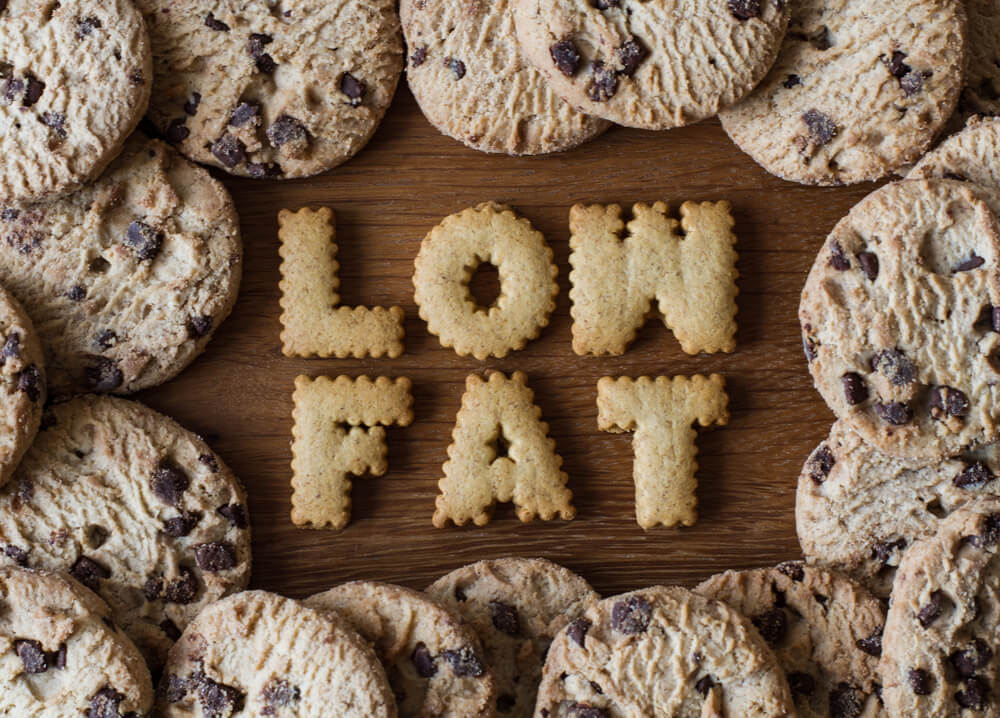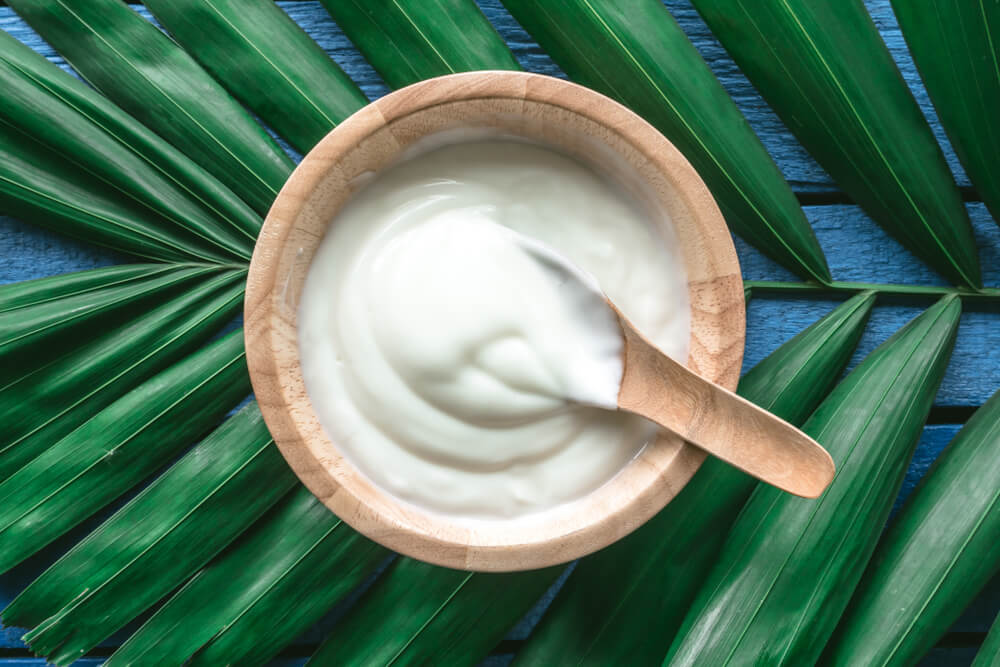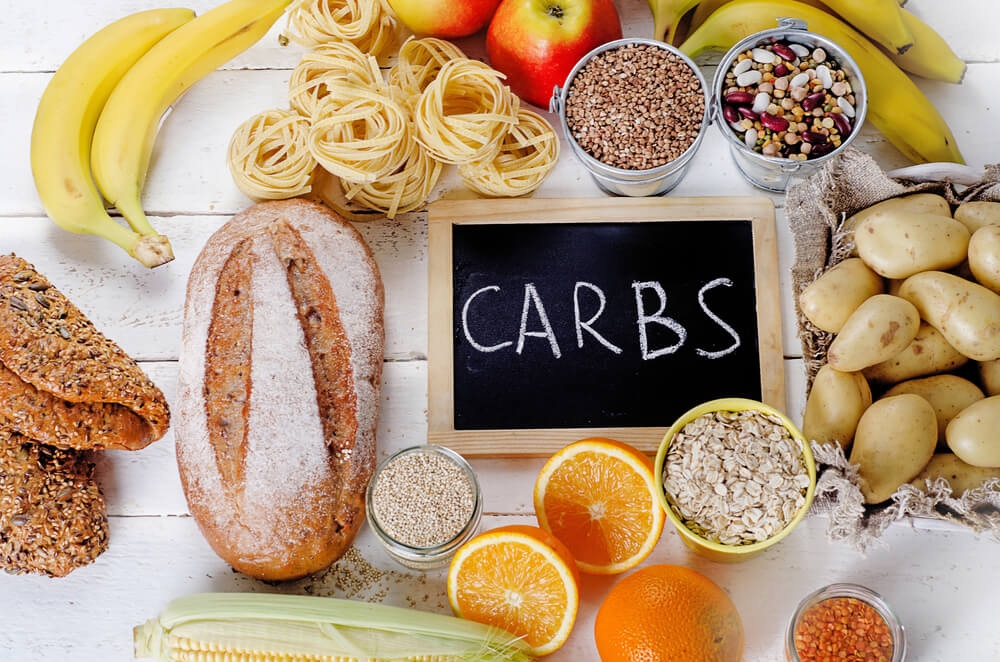
There are all kinds of diets out there. Sometimes it seems wherever you turn there is an advertisement for a brand new, start of the art diet. Diets target specific foods, tell you to eat one thing while avoiding another.
Of course, you can probably find another diet that tells you to eat what the other avoids. And if you talk to anyone who is physically fit they will tell you their own dietary regimen. Realistically the best way to drop weight and keep it off is to find a diet that you can live with. If you’re not able to maintain the diet it isn’t worth doing (outside of shedding some quick pounds for an upcoming event).
A diet is a lifestyle, and while it does take some adapting, as long as you can live with it, your diet will help you drop the pounds and remain healthy. One such diet you should consider is a low fat diet. A low fat diet is about as straight forward as it gets. You don’t focus on one food or specifically avoid others. You simply eat foods that are lower in fat. But what kinds of benefits do low fat diets have? Here is what you need to know about it.
How The Body Loses Weight

Despite the hundreds of different diets out there (or maybe there are thousands. It’s difficult to keep track sometime), losing weight all comes down to one thing: burning more calories than you take in. In reality you could eat nothing but Snickers and drop weight if you burned more calories than what you ate.
Of course, we wouldn’t recommend the Snickers candy bar diet because there’s other things in it that would cause problems with your overall health (such as all the sugar, which could lead to diabetes), but if your goal, in the end, is to just drop weight, you can eat whatever you want as long as you burn more calories off.
This is why you’ll see Olympic runners or swimmers consume tens of thousands of calories a day during training. They need to not only give your body the kind of energy needed to make it through an entire day of working out, but to also have calories to repair muscle tissue. For your purpose, when you want to drop weight there are two options: increase your exercising and reduce your calorie intake.
Because you probably can’t quit your day job and begin training all day, every day, the amount of calories you burn on a daily basis won’t shift all that much (you can add an entire hour of cardio and you might only end up burning a few hundred more calories). So, the best way to burn off your weight is to cut out calories from your diet.
Why A Low Fat Diet Might Be The Way To Go

Cutting calories is far easier than burning them. You can skip the Ranch salad dressing for an oil based option and instantly slice a few hundred calories from your day. It might take you thirty minutes of cardio to do the same thing. Or maybe you drink two coffees with cream and sugar every day. It might take you an hour of weight lifting to make up for your coffee. Or you could cut out the cream and sugar.
As you can see, it’s far easier to strip away calories then to burn them away. This is where going the way of a low fat diet is beneficial. According to the United States Department of Agriculture (2020), there are nine calories per single gram of fat. There are instead just four calories per gram of protein and carbs. This means you literally can eat more than twice the amount of protein and carbs as you would fat and end up with the same calorie intake.
Of course, by not eating twice as much protein you’ll instantly shed calories from your diet, which means you’ll be well on your way to dropping the weight. By going with a low fat diet that is high in lean proteins you will be able to eat more fun while watching your weight drop. That right there is a dream come true.
But I Gain Wait From Carbs, Right?

This is a bit of a misconception. There are people out there who will swear they lost all kinds of weight by cutting out carbs. While there is some basic truth to it weight loss or gain from carbs isn’t what it seems. Weight loss or gain associated from carbohydrates come from water. For every gram of carbohydrates you consume, your body may retain two to three grams of water.
The exact amount will depend on your body and the kind of carbs you’re eating, but the reason why people may seem like they drop a considerable amount of weight when avoiding carbs is because they are ridding their body of water weight, not actual fat storage (Huffington Post, 2017).
Carbs are generally used by your body as an immediate energy source. If the carbs are not used up for energy right away they will begin to retain the water. So it is completely fine to eat a low fat diet that is packed with carbs and protein. The protein will help you repair muscle fiber that has been damaged during a workout.
It will also help keep you feeling fuller, longer. The carbs will be there to give you the immediate energy you need for an exercise or physical activity. Together, a diet low in fat and higher in carbs and protein is your ticket to a healthy lifestyle.
Fat Ends Up As Fat Cells

It is true that in order to drop weight you need to burn more calories than you take in during the day. However, your body handles calories differently because it breaks down the calories differently. Calories from fat are more likely to end up as fat cells in your body because of how it is broken down.
Carbs, as we discussed, break down quickly. These calories provide instant energy and will help improve your workout. Protein takes longer to digest, which is why it is an excellent food option when you want to fill your stomach and maintain a full feeling. Fats, on the other hand, take the longest to digest.
So why exactly do fat calories take longer to digest?
The body doesn’t begin to break down fat calories until it hits the stomach. These cells are not water soluble. This means it requires the stomach acid within your body to begin breaking the fat down. Carbs begin to break down as soon as it enters your mouth, while proteins are eventually broken down and sent throughout the body (as everything from your muscles to your hair require protein to build and repair).
Because fats do not start the break-down process until hitting the stomach the calories will remain within the stomach for longer. Eventually these cells will be turned into a fatty acid and glycerol as it begins to move out of the stomach.
The fat calories are not broken down throughout the upper portion of the digestive track, which means much of it is absorbed in through the small intestine. In order for the body to use the fat as energy it must then assemble the fat cells back into protein and push it into the blood stream.
This takes a considerable amount of work and, often times, the body is not able to keep up (especially if the diet is high in fat intake). With the extensive digestion time much of these calories will end up remaining in the intestines, leading to the development of fatty cells around the intestines. The development may eventually lead to health problems (Cooking Light, 2019).
So about how long does food remain in your system as it is digested?
It depends on the makeup. However, as Cooking Light points out, a bowl of oatmeal, which is made up of primarily complex carbs (which will give you near instant energy), it will be digested and giving you energy in one to two hours. Refined carbs, such as a sugary cereal, will be digested sooner. This is why sugar carbs give you a quick boost in energy, but then results in a crash as your body comes back down from the sugar fix.
Now, take the flip side of the spectrum. A hamburger, which is packed with all kinds of items, takes a long time to digest. This is because portions of the food will be digested quickly while others will take longer.
In fact, it can take up to three days for a burger to be digested. You know that feeling you get after a heavy meal where you just need to nap for the next month?
This comes from your digestive system working overtime in order to break everything down. When you eat foods heavy in fat you’ll have this exact feeling. So not only will you end up consuming more calories with fat-rich foods but you’ll end up feeling heavy and sluggish.
Low Fat Foods

The great thing about a low fat diet is it is pretty easy to determine whether something is low in fat or not. It says so right on the label. Often low to no fat foods will proclaim this up front, making it an easier selection (this doesn’t mean it will be low in calories, but it is a good starting point).
To give you a starting off point, we’ll go over some of the best low fat foods you should begin adding to your diet. First, add in any leafy greens. Whether salad, kale, spinach, or another form of leafy greens, these foods are low in fat, higher in fiber, and bursting with vitamins. Likewise, you’ll want to add fruit to your diet.
Fruit with large amounts of water are great, such as watermelon, as this will help improve digestion and keep you hydrated. These kinds of fruits are also typically lower in natural sugar. There are no shortage to fruit options, so while you need to stick away from the candy section and other sweets for your low fat diet, fruit is a great alternative when your body is craving something sweeter.
Protein
Now, let’s say you’re looking for protein. You want food that will give you that solid protein kick, which is important for most of your body.
Your hair requires a steady intake of protein, and if you’re lifting weights you’ll need protein to rebuild those damaged muscles. Lean birds such as chicken and turkey are excellent choices for lean proteins with very little fat.
Seafood is even better. Because fish is nearly constantly moving while swimming in water their bodies are mostly protein rich muscle. Different fishes have different protein to fat makeups, but you really can’t go wrong with any kind of fish. That is as long as it isn’t deep fried. You’ll need to skip that Friday Fish Fry at your local restaurant, or you’ll need to ask for the fish grilled.
Ancient grains is a favor food type. These are grains that haven’t been processed or manipulated in order to grow heartier. Some ancient grains you should keep an eye out for include quinoa, spelt, farro, and bulgur. These grains are especially high in fiber, vitamins, plus these have a complete branch chain amino acid complex that most other grains are lacking (Healthline, 2018).
Conclusion
The best way to lose weight is to find a diet you can stick to and to burn more calories than you take in. Because there are more calories per gram of fat than there are per gram of protein or carbs you will take in fewer calories while eating more when focusing in on protein or carbs. Ultimately it is up to you, your diet, and what kind of workouts you perform. But as long as you’re able to stick with your low fat diet, you absolutely will begin to see the kind of physical improvements you’ve been hoping for.
-Terry Asher
Terry Asher
Latest posts by Terry Asher (see all)
- Better Family – Product Review Liquid Daily 2 oz - Dec 16, 2024
- Post-Workout Recovery: The Key to Optimal Performance - Nov 25, 2024
- Pre-Workout Supplements – Everything You Need To Know - Nov 18, 2024












[…] This article was originally published by Gymjunkies.com. Read the original article here. […]
[…] Gym Junkies […]
[…] Source link […]
[…] Read The Entire Article By Terry Asher Here. […]